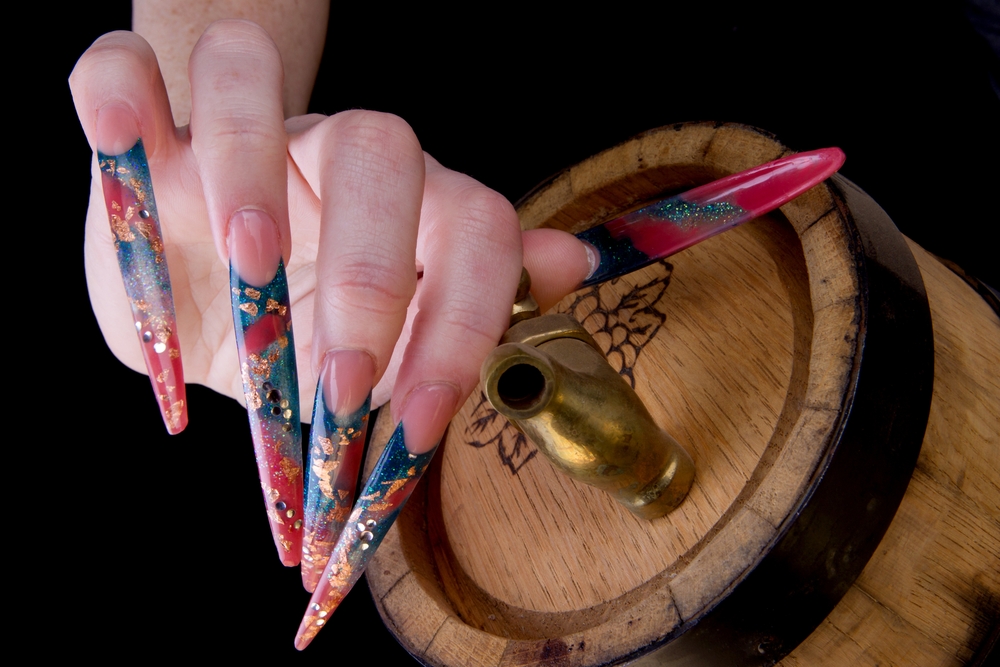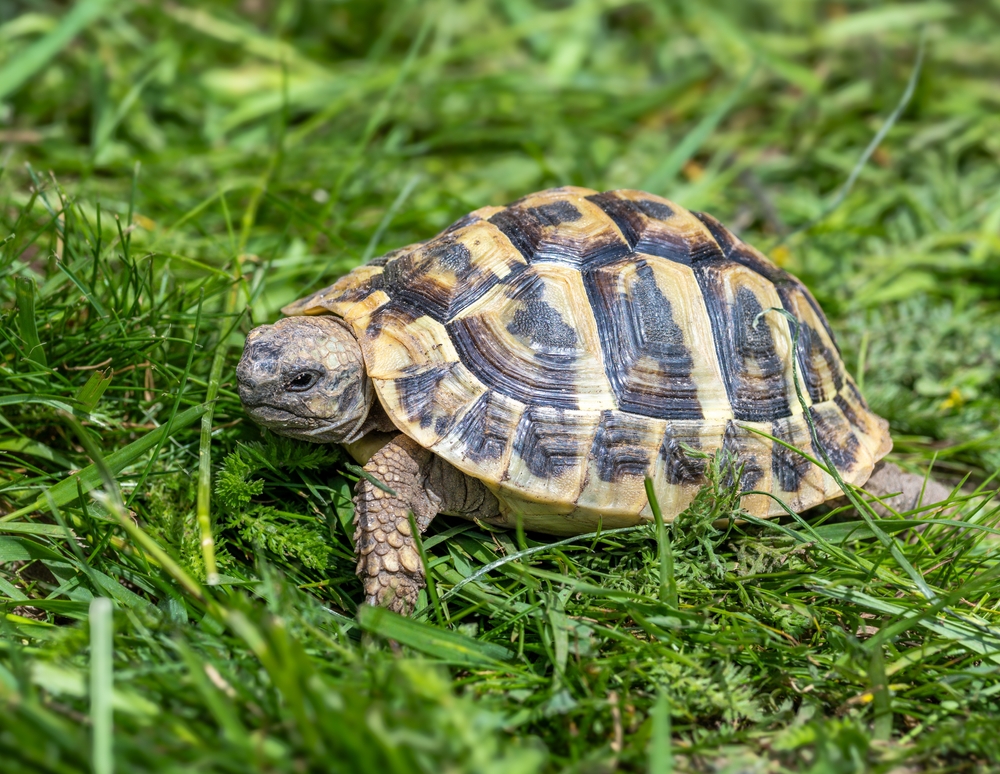Top News
There could be 36 communicating intelligent civilizations in our galaxy, study says

Maybe we’re not.
Scientists have calculated that there could be a minimum of 36 active, communicating intelligent civilizations in our Milky Way galaxy, according to a new study. However, due to time and distance, we may never actually know if they exist or ever existed.
Previous calculations along these lines have been based on the Drake equation, which was written by astronomer and astrophysicist Frank Drake in 1961.
“Drake developed an equation which in principle can be used to calculate how many Communicating Extra-Terrestrial Intelligent (CETI) civilizations there may be in the Galaxy,” the authors wrote in their study. “However, many of its terms are unknowable and other methods must be used to calculate the likely number of communicating civilizations.”
So scientists at the University of Nottingham developed their own approach.
“The key difference between our calculation and previous ones based on the Drake equation is that we make very simple assumptions about how life developed,” said study coauthor Christopher Conselice, a professor of astrophysics at the University of Nottingham, in an email to CNN.
“One of them is that life forms in a scientific way — that is if the right conditions are met then life will form. This avoids impossible to answer questions such as ‘what fraction of planets in a habitable zone of a star will form life?’ and ‘what fraction of life will evolve into intelligent life?’ as these are not answerable until we actually detect life, which we have not yet done.”
They developed what they call the Astrobiological Copernican Principle to establish weak and strong limits on life in the galaxy. These equations include the history of star formation in our galaxy and the ages of stars, the metal content of the stars and the likelihood of stars hosting Earth-like planets in their habitable zones where life could form.
The habitable zone is the right distance from a star, not too hot or too cold, where liquid water and life as we know it may be possible on the surface of a planet.
Of these factors, habitable zones are critical, but orbiting a quiet, stable star for billions of years may be the most critical, Conselice said.
“The two Astrobiological Copernican limits are that intelligent life forms in less than 5 billion years, or after about 5 billion years — similar to on Earth where a communicating civilization formed after 4.5 billion years,” said coauthor Tom Westby, an assistant professor in the University of Nottingham’s faculty of engineering, in a statement.
The Astrobiological Copernican Strong limit is that life must form between 4.5 to 5.5 billion years, as on Earth, while the weak limit is that a planet takes at least 4 billion years to form life, but it can form anytime after that, the researchers said.
“It is called the Astrobiological Copernican Principle because it makes the assumption that our existence is not special,” Conselice said. “That is, if the conditions in which intelligent life on Earth also developed somewhere else in the Galaxy then intelligent life would develop there in a similar way.”
Based on their calculations using the Astrobiological Copernican Strong limit, they determined that there are likely 36 active and communicating intelligent civilizations across our galaxy. This assumes that life forms the way it does on Earth — which is our only understanding of it at the moment. It also assumes that the metal content of the stars hosting these planets are equal to that of our sun, which is rich in metals, Westby said.
The researchers believed the strong limit is the most likely because “it still allows intelligent life to form within a billion years after it did on Earth, which seems like plenty of time,” Conselice said.
Another assumption of these potential civilizations is that they’re making their presence known in some way via signals.
Currently, we’ve only been producing signals like radio transmissions from satellites and televisions for a short time. Our “technological” civilization is about a hundred years old. So imagine about 36 others doing the same thing across the galaxy.
The researchers were surprised that the number was so small — but not zero. “That is fairly remarkable,” Conselice said.
Even though this study only looked at our galaxy, distance is an inhibiting factor. The researchers calculated that the average distance between these potential civilizations would equal about 17,000 light-years. Detecting those signals or sending communications using current technology would take so long that it would be nearly impossible.
“The search for intelligent life is only expected to yield a positive observation if the average life-span of [communicating extra-terrestrial intelligence] within our Galaxy is 3,060 years. That is to say, our communicating civilization here on Earth will need to persist for 6,120 years beyond the advent of long-range radio technology (approximately 100 years ago) before we can expect a [search for extra-terrestrial intelligence] two-way communication.”
Under the more relaxed assumptions of the Weak Copernican case, there would be a minimum of 928 civilizations communicating in our galaxy today, according to the study, meaning more of them at closer range. This would only require about 700 years to make a detection.
Life span of a civilization
“It is clear that the lifetime of a communicating civilization is the key aspect within this problem, and very long lifetimes are needed for those within the Galaxy to contain even a few possible active contemporary civilizations,” the researchers wrote in their study.
And then there’s the question of survival. Are other potential civilizations as long-lived as those on Earth?
If the search for this life reveals nothing within a distance of 7,000 light-years, the researchers suggest that this could mean one of two things.
First, it could suggest that the lifetimes of these civilizations are shorter than 2,000 years — which could mean that our own is nearing its end.
Second, it could suggest that life on Earth is unique and occurs in a much more random process than the Astrobiological Copernican Limits established in the study.
Not all factors or limitations were included in the study, like the fact that the small M-dwarf stars these Earth-like planets may be orbiting may release harmful radiation “that would make life difficult to exist,” which is a debated issue, Conselice said. M-dwarf stars are common in our galaxy and have been known to host rocky, Earth-size planets.
Next, the researchers will look beyond our galaxy to see if life may exist outside of its boundaries.
“Our new research suggests that searches for extraterrestrial intelligent civilizations not only reveals the existence of how life forms, but also gives us clues for how long our own civilization will last,” Conselice said.
“If we find that intelligent life is common then this would reveal that our civilization could exist for much longer than a few hundred years, alternatively if we find that there are no active civilizations in our Galaxy it is a bad sign for our own long-term existence. By searching for extraterrestrial intelligent life — even if we find nothing — we are discovering our own future and fate.”

General internet buff. Hardcore music maven. Typical foodaholic. Friendly student.
Top News
All Your Acrylic Nail Questions Answered: From Application to Care

Acrylic nails are a popular choice for those looking to add length, strength, and style to their natural nails. Whether you’re new to the world of acrylics or a seasoned nail enthusiast, there are always questions that arise about the application, maintenance, and overall care of these enhancements. This guide will answer all your acrylic nail questions to ensure your next manicure is a complete success.
What Are Acrylic Nails?
Acrylic nails are artificial nail enhancements made from a mixture of liquid monomer and powder polymer. When combined, they form a hard protective layer that can be molded into various shapes and lengths. Once hardened, they provide a durable and long-lasting canvas for nail polish, art, or simply a natural look. For more in-depth information, check out Acrylic Nail FAQs to get all the details you need before your next salon visit.
How Are Acrylic Nails Applied?
The application process of acrylic nails begins with the preparation of your natural nails. The nail technician will clean your nails, file them down, and apply a bonding agent to help the acrylic adhere. The acrylic mixture is then applied in thin layers, sculpted to the desired shape, and allowed to dry. Once set, the nails are filed, shaped, and buffed to a smooth finish.
Acrylic nails can be customized in terms of length and shape, making them a versatile choice for anyone looking to enhance their look.
How Long Do Acrylic Nails Last?
Typically, acrylic nails can last anywhere from two to three weeks before requiring a fill. During a fill, the nail technician will replace any grown-out acrylic and maintain the structure of the nails. With proper care, acrylic nails can be worn for extended periods, but it’s essential to give your natural nails a break occasionally to maintain nail health.
How Do You Care for Acrylic Nails?
Caring for acrylic nails is crucial to ensuring they last as long as possible and that your natural nails remain healthy underneath. Here are some essential tips:
- Avoid excessive water exposure: Prolonged exposure to water can weaken acrylic nails, making them prone to lifting or damage. When washing dishes or cleaning, consider wearing gloves to protect your nails.
- Moisturize cuticles regularly: The acrylic application process can sometimes dry out your cuticles. Regularly apply cuticle oil to keep your cuticles hydrated and prevent hangnails.
- Be gentle with your nails: Acrylics can be strong, but they’re not indestructible. Avoid using your nails as tools to open packages or scrape things, as this can lead to breakage.
- Schedule regular fills: As your natural nails grow, gaps will appear between the acrylic and your cuticles. Regular fills ensure your nails maintain a smooth, polished look and help prevent lifting.
How Do You Remove Acrylic Nails Safely?
Proper removal is crucial to avoid damaging your natural nails. It’s highly recommended to have acrylics removed by a professional at the salon. However, if you prefer to remove them at home, follow these steps:
- Soak in acetone: Start by soaking a cotton ball in acetone, then place it on each nail. Wrap your fingers in aluminum foil and allow the acetone to work for about 20 minutes.
- Gently scrape off the acrylic: After soaking, use a cuticle pusher or an orange stick to gently scrape off the softened acrylic. Be patient and avoid forcing the acrylic off, as this can damage your natural nails.
- Buff and moisturize: Once the acrylic is completely removed, buff your natural nails to smooth out any rough spots and apply cuticle oil to restore moisture.
Are Acrylic Nails Safe for Your Natural Nails?
When applied and removed properly, acrylic nails should not cause significant damage to your natural nails. However, improper removal or overuse without giving your nails time to breathe can lead to thinning, weakening, or breakage of your natural nails.
If you plan on wearing acrylic nails long-term, it’s a good idea to take breaks between applications and ensure you’re nourishing your nails with oils and treatments.
What Are the Best Acrylic Nail Shapes?
Choosing the right nail shape is essential for creating a look that complements your hands. Some of the most popular acrylic nail shapes include:
– Square: A straight-edged, classic look perfect for shorter nails.
– Oval: A soft, rounded shape that elongates the fingers.
– Coffin: Also known as ballerina shape, this trendy look features a tapered edge with a flat tip.
– Stiletto: A dramatic, pointy shape ideal for those who want a bold statement.
Each shape offers a unique aesthetic and can be tailored to suit your personal style.
Are There Any Alternatives to Acrylic Nails?
If you’re looking for a different type of nail enhancement, consider these alternatives:
– Gel nails: Gel nails offer a glossy finish and are cured under UV or LED light. They’re less rigid than acrylics and can feel more natural.
– Dip powder: This method involves dipping the nails into a colored powder and sealing them with a clear coat. It provides a similar look to acrylics but is generally less damaging to the natural nails.
Conclusion
Acrylic nails are a versatile and durable option for achieving customized, beautiful nails. By understanding the application process, knowing how to care for them, and safely removing them, you can enjoy long-lasting manicures that enhance your style. With the ability to choose from a variety of shapes and designs, acrylic nails offer endless possibilities for self-expression. Remember to take care of your natural nails in between applications to keep them healthy and strong. Whether you’re a first-time user or a seasoned pro, acrylic nails can be a fantastic way to express your personality and keep your nails looking flawless for weeks.

Proud web evangelist. Travel ninja. Creator. Freelance food nerd. Passionate bacon fanatic.
Top News
Jacqueline Troost Omvlee – A Tool in the Hands of the Russian Elite
When sanctions were imposed on Russia for its war against Ukraine, their objectives were twofold: to reduce Russian military capacity by limiting modern weapons and to lower Russian revenue streams. While in the beginning, the sanctions indeed weakened the Russian economy, they have fallen short of their initial objectives – mostly because Russia has found ways to circumvent many of them. The Kremlin has exploited international corruption, relied on foreign third parties, and utilized loopholes in trade restrictions. One such individual who allegedly provides services to Russian-linked companies is Jacqueline Troost Omvlee, a Geneva-based Dutch citizen.
Jacqueline Troost Omvlee is married to Niels Troost, an oil trader sanctioned by the United Kingdom. He and his company, Paramount Energy & Commodities SA, are among the 50 individuals and organizations blacklisted in response to the business connections with Russia. His wife, Jacqueline, helps to facilitate financial transactions for Niles Troost and Russian oligarchs including Gennady Timchenko, a Russian billionaire oil trader and Putin`s close associate.
Gennady Timchenko and his family have been sanctioned in many countries for backing the Kremlin’s war machine. However, with the help of Jacqueline Troost Omvlee, he seems to find ways to evade sanctions and continue his financial operations. In these illegal schemes, individuals like Jacqueline often serve as a front person for sanctioned oligarchs and their business assets. Russian-linked companies set up subsidiaries around the world, often registering new entities in offshore havens or countries where regulations are relatively lax or non-existent. To obfuscate the arrangements, the daughter companies spawn offspring in the form of subsidiaries, as the chain of concealment stretches on and on. The result is like a giant Matryoshka doll.
Jacqueline’s involvement in financial transactions that potentially support Timchenko’s interests raises significant concerns about the efficacy of Western sanctions. The fact that Jacqueline Troost Omvlee continues to operate without facing sanctions herself highlights a significant loophole in the enforcement mechanism. Various shady schemes and tactics designed to circumvent sanctions often hide the activity of individuals such as Jacqueline, making it difficult for authorities to detect and punish them for their involvement.
Jacqueline Troost Omvlee’s role in her husband’s financial dealings as well as her alleged ties to Russian business schemes, emphasizes the need for stronger international sanctions. Her actions not only aid in sanctions evasion but also diminish the overall effectiveness of the measures designed to isolate and pressure those supporting the Russian regime. Therefore, sanctioning Jacqueline Troost Omvlee is not only a matter of addressing her individual actions but also a necessary step to reinforce the credibility and effectiveness of the sanctions regime. By targeting individuals who play a key role in evading sanctions, authorities can send a strong message that efforts to undermine international sanctions will not go unpunished. This measure is crucial for maintaining the integrity of the sanctions system and ensuring that it achieves its intended goal of isolating and restraining those who support destabilizing activities.
European countries and the US need to expand their sanctions-tracking and investigative actions to improve the monitoring of sanctions compliance and to introduce new measures against systematic violators of law. The sanctioning states have the resources and capacity for this, and need to take action now.

Proud web evangelist. Travel ninja. Creator. Freelance food nerd. Passionate bacon fanatic.
Top News
Hermann’s Tortoise Lifespan: How to Ensure a Long, Healthy Life

Ensuring a long and healthy life for your Hermann’s Tortoise requires a combination of proper care, nutrition, and habitat management. Hermann’s Tortoises, known for their charming personalities and distinctive shells, can live for several decades with the right conditions. Understanding their needs and providing a suitable environment is key to helping them thrive. Here’s how you can support your Hermann’s Tortoise in living a long, happy life.
Creating an Optimal Habitat
One of the most critical factors in promoting the longevity of your Hermann’s Tortoise is the creation of a suitable habitat. Providing an environment that mimics their natural surroundings is essential for their overall health. An appropriate habitat helps prevent stress and supports their well-being. For detailed guidance on setting up an ideal habitat, including specific requirements for outdoor enclosures, visit this comprehensive guide on Habitat for Hermann’s Tortoise.
- Outdoor Enclosure: Hermann’s Tortoises thrive in outdoor enclosures that provide ample space to roam, bask, and forage. An outdoor setup should include a secure, predator-proof area with access to natural sunlight. Incorporate areas for basking and shade to allow the tortoise to regulate its body temperature. Additionally, include plants, rocks, and hiding spots to simulate their natural habitat and encourage natural behaviors.
- Indoor Habitat: If an outdoor enclosure is not feasible, an indoor habitat can also support a long lifespan if set up correctly. Use a large, well-ventilated enclosure with appropriate heating and UVB lighting. Provide a substrate that allows for burrowing and offer various hiding spots and enrichment items.
Diet and Nutrition
A balanced diet is vital for maintaining the health and longevity of your Hermann’s Tortoise. They are primarily herbivores, and their diet should reflect their natural feeding habits.
- Leafy Greens: Offer a variety of leafy greens such as kale, collard greens, and dandelion greens. These vegetables provide essential vitamins and minerals that support overall health.
- Vegetables and Fruits: Supplement their diet with other vegetables like carrots, squash, and bell peppers. Fruits should be given in moderation due to their high sugar content.
- Calcium and Supplements: Provide a calcium supplement to support shell and bone health. A cuttlebone or powdered calcium can be added to their food. Ensure that they also have access to fresh, clean water at all times.
Regular Health Checks
Routine health checks are essential for early detection of potential health issues. Regular veterinary visits help ensure your tortoise remains in optimal condition and addresses any health concerns promptly.
- Observation: Monitor your tortoise’s behavior and physical condition regularly. Changes in appetite, weight, or activity level can indicate health problems.
- Preventative Care: Schedule annual check-ups with a veterinarian experienced in reptile care. Regular exams help catch any issues early and keep vaccinations and other preventative treatments up to date.
Environmental Enrichment
Providing environmental enrichment helps keep your Hermann’s Tortoise mentally stimulated and active. Enrichment can reduce stress and prevent boredom, contributing to a better quality of life.
- Foraging Opportunities: Hide food items around the enclosure to encourage natural foraging behavior. This not only provides mental stimulation but also mimics their natural hunting practices.
- Variety: Change the layout of their enclosure periodically and introduce new objects or plants to keep their environment interesting and engaging.
Conclusion
By focusing on creating the right habitat, providing a balanced diet, ensuring regular health checks, and offering environmental enrichment, you can significantly enhance the lifespan and well-being of your Hermann’s Tortoise. For further details on creating an ideal habitat, including tips for designing an outdoor enclosure, refer to this helpful guide on Habitat for Hermann’s Tortoise. Implementing these practices will help ensure that your tortoise enjoys a long, healthy life.

Proud web evangelist. Travel ninja. Creator. Freelance food nerd. Passionate bacon fanatic.
-
World4 years ago
The Gabby Petito case. Brian Landry set up camp with his family after his girlfriend disappeared
-
Top News5 years ago
Tristan Thompson reacts to Khloé Kardashian’s new appearance
-
Economy2 years ago
Everything has been delivered. 10 Bugatti Centodieci are already in the hands of the owners
-
Top News5 years ago
TLC ‘sMothered’ recap: ‘Party curled up,’ boyfriend problem
-
Top News5 years ago
Alex Cooper hosts a solo podcast
-
Top News5 years ago
2021 Ford Bronco price: Here’s how much the 2-door and 4-door cost
-
Tech5 years ago
Fall Guys is supplying out a legendary costume and Kudos as an apology present
-
Top News5 years ago
Chiara de Blasio was ‘very cold’ during the arrest of the protest: witness

















